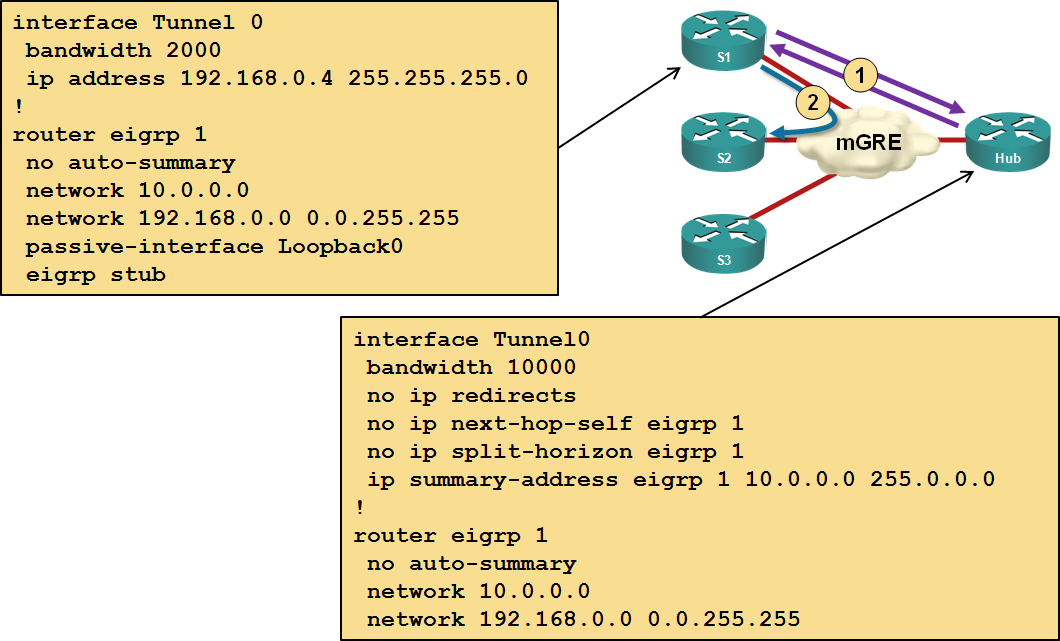EIGRP Summarization in DMVPN Phase 2 Networks
Imagine the following scenario: you’ve configured a Phase 2 DMVPN network with a hub and a few spokes. DMVPN is configured properly, IPSec and NHRP are working, you can ping all around the DMVPN cloud.
Next step: configuring EIGRP. You know you have to disable EIGRP split horizon and EIGRP next-hop processing. You even remember to configure interface bandwidth.
Someone told you to minimize the EIGRP routing traffic, so you use EIGRP stub routers on the spokes and route summarization on the hub router. The final EIGRP configuration is shown in the following diagram:

Note: Your network is using 10.0.0.0/8 addresses for LAN links and loopbacks and 192.168.0.0/16 for WAN links.
Would your Phase 2 DMVPN network perform as expected? If not, what’s wrong with it? If you think it has a problem, what would you change?
Don’t cheat, answer the questions before reading the solution.

Next, for the thoughts I have. Summarizing routes with EIGRP in Phase 2 deployments does not significantly improve scalability if the spokes support EIGRP stub feature. Indeed, the main problem with EIGRP scalability is query scoping, which is effectively implemented using the stub feature. Being distance-vector, EIGRP is not very sensitive to topology change events in hub & spoke networks - incremental updates handle this smoothly. Unlike link-state protocols, EIGRP routing for Phase 2 may handle large hub and spoke topologies better. Of course, for large deployments, BGP could be a better option anyways.
To finish with, I would like to recall my favorite RFC 1925, truth #11. Back in 2003 DMVPN was proclaimed as uniquely new solution that, however, was built upon the technology used for CLIP optimization back in 90s! And it took Cisco forever to finally stabilize and come with Phase 3. Seriously, shame on them :)